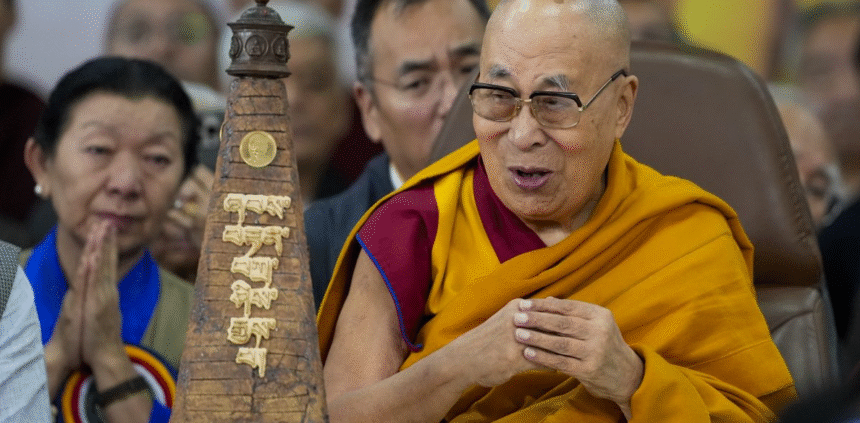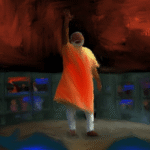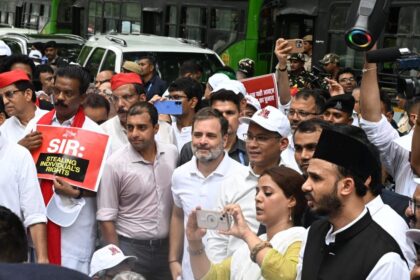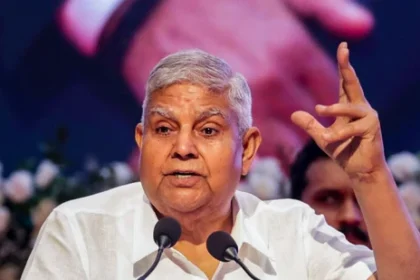Dalai Lama’s Presence in Dharamshala Boosts India’s Soft Power Advantage Over China After 64 Years in Exile
Dalai Lama’s presence in Dharamshala boosts India’s soft power advantage over China after 64 years in exile, highlighting his enduring strategic influence.
The Enduring Challenge to Chinese Authority and the Dalai Lama’s Global Standing
A Spiritual Symbol in a Geopolitical Storm
As the 14th Dalai Lama, Tenzin Gyatso, marked his 90th birthday, a milestone celebrated with spiritual devotion and global reverence, the political stakes surrounding his legacy remain high. Over seven decades since his exile from Tibet following China’s military occupation in 1950, the Dalai Lama has continued to represent a spiritual beacon for Tibetans and a moral challenge to Beijing’s control over the region. His longevity and symbolism have not only reinforced Tibetan resistance but have also forced regional powers—especially India—into a delicate balancing act between principle and pragmatism.
China’s Uneasy Relationship with the Dalai Lama
Few issues are as emotionally and politically fraught for China as the status of Tibet and the legacy of the Dalai Lama. For the Chinese Communist Party (CCP), the Tibetan spiritual leader represents not just a religious figure but an existential challenge to its sovereignty, identity, and ideological narrative. Despite its economic ascension and political power, China remains acutely insecure about the Dalai Lama’s enduring appeal, both within Tibet and globally.
This insecurity manifests in a persistent campaign to delegitimise him. Chinese state media has frequently portrayed the Dalai Lama in hostile terms—once infamously referring to him as a “monk in wolf’s clothing.” Far from diminishing his influence, however, such vitriol has paradoxically only strengthened his moral authority and deepened global sympathy for the Tibetan cause.
The Inverse Effect of Vilification
China’s relentless vilification efforts—ranging from derogatory propaganda to the deployment of political commissars across Tibet—have failed to break the spiritual bond between the exiled leader and the Tibetan people. Even decades of Sinicisation through forced cultural assimilation, linguistic suppression, and mass Han migration have not extinguished his image in Tibetan hearts.
Global leaders’ meetings with the Dalai Lama, whether public or private, routinely draw strong objections from Beijing. Yet such diplomatic protests frequently backfire, drawing greater international media attention to his peaceful message and the oppressive nature of China’s Tibet policy.
Succession Struggle: A Brewing Storm
As the Dalai Lama enters his tenth decade, the issue of his reincarnation looms large. On his 90th birthday, he reaffirmed that only his trust—the Gaden Phodrang Trust—has the authority to determine the next Dalai Lama. This was a pointed rebuttal to Beijing’s longstanding claim that it would appoint the 15th Dalai Lama within China’s borders, using traditional but politically co-opted religious institutions.
This position was also echoed during a significant conclave held in Dharamshala in 2019, where leaders from all four major schools of Tibetan Buddhism endorsed the Dalai Lama’s exclusive authority over his succession. Their joint resolution categorically stated that any successor appointed by the Chinese state would be rejected by Tibetans and lack global legitimacy.
Weaponising Reincarnation: China’s Strategy
For China, controlling the Dalai Lama’s succession is not merely a matter of religious orthodoxy—it is a cornerstone of its strategy to cement control over Tibet. By appointing a compliant spiritual figurehead, Beijing aims to sever the transnational link between Tibetan Buddhism and the government-in-exile in India.
This manipulation of reincarnation represents an attempt to recast spiritual heritage into a state-controlled narrative, erasing the political potency of Tibetan exile identity. But such interference also risks deepening the crisis of legitimacy Beijing faces in Tibet and among millions of Buddhists worldwide.
India’s Diplomatic Tightrope: Between Reverence and Realpolitik
Since offering sanctuary to the Dalai Lama in 1959, India has treaded a careful line—allowing religious activities and exile administration but avoiding overt political alignment with his advocacy. Despite the Dalai Lama’s stature as a global moral leader, Indian governments have treated his presence with caution, often influenced by fluctuating ties with China.
In 2018, this caution became overt. The Modi government advised officials to avoid public events linked to the Dalai Lama, particularly during sensitive phases in Sino-Indian relations. A major event marking his 60 years in exile was abruptly relocated from Delhi to Dharamshala, under advisement from the Ministry of External Affairs.
While Indian civil society holds the Dalai Lama in high regard, successive governments have preferred a posture of “quiet containment”—respecting religious activity but discouraging political expression, especially when it might provoke Beijing.
Tibetan Sentiment and the Generational Divide
This cautious policy, however, has not been without cost. Among the estimated 95,000 Tibetans in exile in India, there exists growing frustration, particularly among the younger generation. The 2018 cancellation sparked visible discontent, with many viewing it as an affront to their spiritual leader and a capitulation to Chinese pressure.
These perceptions were only heightened by the lack of strategic returns—China’s incursions into eastern Ladakh in 2020 and the ensuing military standoff proved that diplomatic restraint toward the Dalai Lama did little to moderate Beijing’s aggression.
Strategic Calculations, Reincarnation Diplomacy, and the Future of Tibet-India-China Relations
The Ladakh Clash and a Shift in Strategic Thinking
The deadly confrontation in Galwan Valley in June 2020, where 20 Indian and reportedly four Chinese soldiers lost their lives, marked a turning point in India-China relations. In the aftermath, several retired military and security officials in India advocated a rethinking of the country’s Tibet policy—including a more assertive embrace of the Dalai Lama.
Former National Security Adviser M.K. Narayanan, writing in The Hindu, criticised India’s previous distancing from the Dalai Lama, calling it a strategic misjudgment. He argued that restoring the Dalai Lama’s visibility and institutional support should be integral to India’s China policy.
Similar sentiments were echoed across Delhi’s strategic community. Arvind Gupta, head of the Vivekananda International Foundation, publicly stated that India should reengage Tibet diplomatically and enhance the Dalai Lama’s visibility in political circles. For once, strategic pragmatists and civil society voices converged on the need to re-evaluate India’s stance.
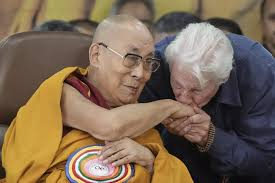
Dharamshala as the Moral Capital of Tibet
Regardless of where the 15th Dalai Lama may be born or recognised, it is widely expected that he would reside in Dharamshala—home to the Central Tibetan Administration and the spiritual nucleus of Tibetan Buddhism in exile.
For decades, Dharamshala has served not just as a physical refuge, but as the symbolic and administrative capital of an unbowed Tibetan identity. Its significance transcends geography. In the eyes of the global Buddhist community, it holds the moral and spiritual legitimacy that Beijing cannot manufacture.
Beijing’s Reincarnation Gamble and Its Limits
Beijing’s determination to control the next Dalai Lama’s selection process stems from a larger ambition—to neutralise Tibetan resistance by severing the chain of spiritual succession. Yet this strategy is fraught with risk. A successor chosen by the CCP would face rejection not only from Tibetans but also from the international Buddhist community.
This would create a spiritual schism that undermines China’s objectives and potentially radicalises a new generation of Tibetan youth. Far from consolidating control, Beijing may end up deepening the resistance it seeks to extinguish.
India’s Strategic Leverage and Global Implications
India’s stewardship of the Tibetan exile movement gives it unique leverage—both moral and geopolitical. In an era where global alliances are being redrawn, Delhi can amplify its strategic profile by standing for pluralism, religious freedom, and human rights.
Such a pivot, however, demands courage. Reclaiming the Dalai Lama’s political stature within Indian diplomacy will require confronting Chinese backlash and navigating domestic political calculus. But it could also reaffirm India’s global democratic credentials at a time of rising authoritarianism.
Dharamshala’s Enduring Significance
As the succession question intensifies, the Dalai Lama’s choice to vest reincarnation authority solely in his trust has cemented Dharamshala’s position as the epicentre of legitimate Tibetan spiritual authority. While China may control the geography of Tibet, it has failed to capture its soul.
Rather than weakening his influence, decades of Chinese hostility have elevated the Dalai Lama into a moral figure of global resonance. His successor—whenever and wherever he appears—is poised to inherit not just a religious role but a geopolitical legacy intertwined with the very idea of freedom.
In this high-stakes contest, Dharamshala—not Beijing—continues to hold the moral and symbolic upper hand.
Global Buddhist Politics, the Diaspora Voice, and the Future of the Tibet Movement
Global Buddhist Politics and Beijing’s Expanding Influence
As China attempts to position itself as a guardian of global Buddhism, it has increasingly used diplomatic, financial, and institutional tools to expand its influence across Buddhist-majority nations. Countries like Thailand, Cambodia, Mongolia, Sri Lanka, and Myanmar have seen a steady influx of Chinese-funded monasteries, cultural centers, and Buddhist exchange programs aimed at aligning regional clergy with Chinese narratives.
Beijing’s aim is not merely spiritual engagement—it is political. By presenting itself as a patron of global Buddhism, China seeks to delegitimise the Dalai Lama’s authority and promote a version of Tibetan Buddhism that conforms to its national security interests. These efforts have met with varying degrees of success, with some clerical institutions in Southeast Asia accepting Chinese support while remaining cautious of ideological alignment.
However, many in the global Buddhist community remain wary of China’s intentions, especially when it comes to control over reincarnation processes and religious education. This has kept the Dalai Lama’s moral authority largely intact, particularly among independent monastic institutions.
The Tibetan Diaspora: Custodians of Identity in Exile
Across more than 40 formal settlements and countless informal communities, Tibetans in exile—especially in India, Nepal, the United States, and Europe—have kept alive their language, traditions, governance, and collective memory. Their role as custodians of a displaced nation has become more critical as the succession question looms.
Second- and third-generation Tibetans born in exile increasingly identify as global citizens, yet their connection to the Tibetan cause remains resilient. Many serve in key positions within the Central Tibetan Administration, lead advocacy groups, or act as cultural ambassadors worldwide.
Youth-led movements such as Students for a Free Tibet (SFT), Tibetan Youth Congress (TYC), and Tibetan Women’s Association (TWA) have intensified campaigns for awareness and solidarity, utilising social media, art, public protest, and global diplomacy.
Reasserting the Role of the Central Tibetan Administration (CTA)
Based in Dharamshala, the CTA remains the administrative and political hub of the Tibetan exile community. It plays a vital role not just in governance, but also in education, health, and international advocacy.
Though not officially recognised by any nation as a government-in-exile, the CTA maintains diplomatic offices in over 10 countries and consistently engages with parliaments, civil society organisations, and international human rights forums. As the 15th Dalai Lama’s recognition process begins to unfold, the CTA is expected to play a central role in managing the spiritual and political transition.
Its legitimacy, however, depends on global perception and internal cohesion. Continued support from democratic governments and transparency in leadership will be key in maintaining the CTA’s credibility in the years ahead.
International Legal and Diplomatic Avenues
Tibet’s unresolved status in international law remains one of the world’s longest-standing issues of occupation. Legal scholars and international lawyers have pointed out that Tibet was historically independent until its forceful annexation by China in 1950. However, due to Cold War politics and changing global alliances, most countries now recognise Tibet as part of China—de facto, if not de jure.
Despite this, Tibet-related resolutions have regularly surfaced in the US Congress, European Parliament, and UN human rights bodies. The Global Magnitsky Act and the Reciprocal Access to Tibet Act are examples of Western legislative responses aimed at addressing human rights violations and denying China unfettered control over Tibet’s narrative.
These platforms, though symbolic, help maintain pressure on China and keep the Tibetan cause visible in international discourse. As the reincarnation debate intensifies, such forums will become more important in influencing global opinion.
The Future of the Tibetan Movement: Continuity and Change
As the world anticipates the eventual passing of the 14th Dalai Lama, the Tibetan movement faces a generational inflection point. Can a leaderless movement sustain its momentum? Can younger Tibetan leaders rise to global prominence in the absence of the Dalai Lama’s unifying presence?
These are pressing questions. Yet the Dalai Lama himself has repeatedly emphasised the importance of institutional resilience over personality-driven leadership. His vision for a democratic and decentralised Tibetan movement has already been partially realised through the elected Sikyong (President) system within the CTA.
As digital activism grows, so does the ability of Tibetans in exile to engage global audiences, shape narratives, and form transnational alliances. Cultural diplomacy, environmental advocacy (given Tibet’s importance as the “Third Pole”), and human rights campaigns are likely to play larger roles in future strategies.
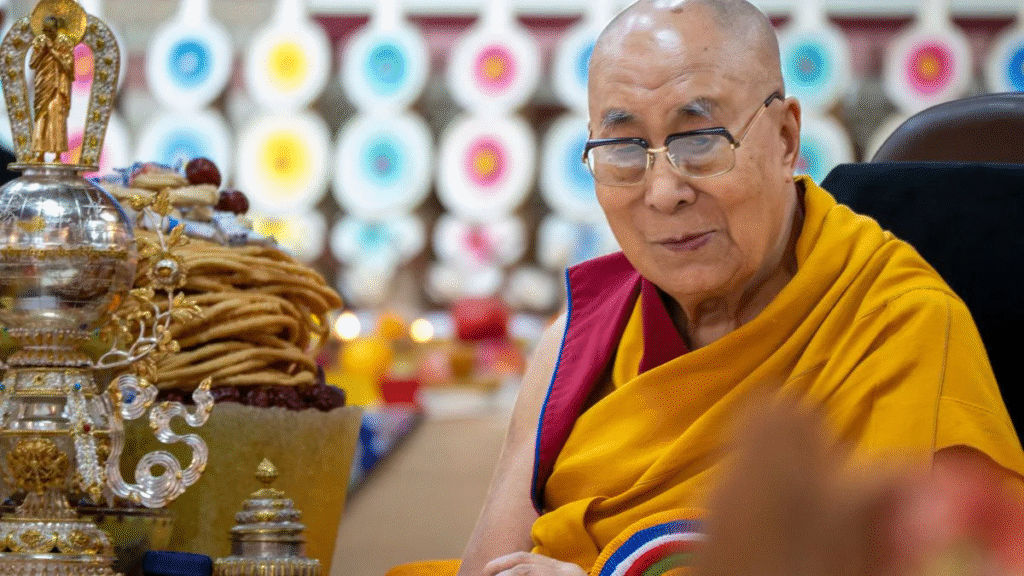
An Unfinished Struggle with Enduring Hope
The story of Tibet is not simply one of displacement—it is one of remarkable cultural and spiritual survival. Dharamshala, with its monasteries, archives, and institutions, stands as a testament to the resilience of a people who have refused to let forced exile translate into erasure.
As the Dalai Lama turns 90, the struggle he symbolises enters a new chapter—less about confrontation with a superpower, and more about safeguarding the spiritual, cultural, and political DNA of a nation in exile. The world watches, and the stakes are high, but the Tibetan spirit remains unbroken.
Reincarnation Politics and the Global Implications of Choosing the 15th Dalai Lama
Reincarnation in Tibetan Buddhism: Tradition vs. Geopolitical Stakes
The process of reincarnation, or the recognition of a tulku (reincarnated spiritual teacher), is deeply embedded in Tibetan Buddhism. For centuries, this sacred tradition has been determined by spiritual signs, visions, dreams, and the collective affirmation of senior lamas and monks. With the Dalai Lama lineage being the most revered among Tibetan Buddhists, any deviation from traditional methods could result in both religious disunity and geopolitical tensions.
The 14th Dalai Lama has consistently reiterated that only he—and his designated religious institutions—have the spiritual and legal authority to guide the recognition of his successor. Beijing, however, remains adamant in asserting its right to oversee and approve the selection, citing a 2007 regulation requiring all reincarnations of Tibetan lamas to be state-sanctioned.
The Chinese Strategy: Manufacturing a Successor
Beijing’s move to control the 15th Dalai Lama’s succession is part of a long-term strategy to fragment Tibetan unity and undermine the Central Tibetan Administration. By installing a state-selected reincarnation within Chinese territory—likely under the auspices of government-controlled monastic networks—China aims to generate an alternative religious authority aligned with Communist Party interests.
This strategy mirrors the approach taken in 1995, when the Chinese government rejected the Dalai Lama’s recognition of the 11th Panchen Lama and installed its own candidate, Gyaincain Norbu. The Dalai Lama’s choice, Gedhun Choekyi Nyima, disappeared soon after being identified and has not been seen publicly since. The precedent set in this case alarms Tibetan clergy and the global community alike.
Global Ramifications: Legitimacy, Recognition, and Rival Authority
If Beijing announces a 15th Dalai Lama, it would create a geopolitical and spiritual schism—between two claimants to a sacred role, each with profoundly different foundations of legitimacy. Most of the Tibetan Buddhist world, particularly outside China, is likely to reject Beijing’s appointee. However, China’s economic leverage may force some governments and institutions to remain silent or cautiously neutral.
This divergence would effectively produce two Dalai Lamas—one endorsed by a religious tradition, the other by a geopolitical superpower. Such a scenario threatens to fracture the Tibetan community further and confuse global Buddhist adherents. It would also test the resolve of democratic nations to support spiritual freedom over diplomatic expediency.
India’s Position and the Regional Security Dimension
India, home to the current Dalai Lama and the Central Tibetan Administration, is at the center of this complex challenge. Historically, India has avoided direct involvement in the reincarnation issue to preserve diplomatic space with China. But as the succession issue gains urgency, strategic thinkers are urging Delhi to stake a principled and proactive stand.
Should the next Dalai Lama be identified within Indian territory, it would place India in direct ideological opposition to China’s position. Such a move could become a diplomatic flashpoint, drawing global attention and possibly re-energising the Tibetan cause. It would also elevate India’s soft power standing in Asia, particularly among Buddhist-majority nations.
The Role of the International Community and Buddhist Networks
The legitimacy of the 15th Dalai Lama will, in part, be shaped by the international community’s response. Democratic countries, Buddhist institutions, and civil society groups can play a critical role in validating a genuine spiritual successor. Diplomatic recognition, public support, and legal protections for Tibetan institutions will matter immensely.
Major monasteries across Nepal, Bhutan, Mongolia, the US, and Europe will be instrumental in affirming the rightful reincarnation. Their collective endorsement will either strengthen the Tibetan spiritual lineage or risk fragmentation under political pressure.
The Symbolism of Dharamshala
Regardless of where the reincarnated Dalai Lama is born, Dharamshala is expected to remain the epicenter of spiritual authority for Tibetans in exile. With over six decades of continuous residence, institutional memory, and spiritual continuity, Dharamshala is more than a geographic refuge—it is a living archive of the Tibetan resistance and a beacon of Buddhist heritage.
The Dalai Lama’s statement that only his trust can confirm the next reincarnation firmly reinforces the symbolic supremacy of Dharamshala over Beijing. For Tibetans and many Buddhists worldwide, it is this city—not Lhasa—that now holds the flame of continuity.
A Struggle Beyond Borders and Time
The reincarnation of the Dalai Lama is no longer a purely religious matter—it has become a geopolitical flashpoint involving questions of sovereignty, faith, identity, and resistance. The 15th Dalai Lama, once recognised, will not only inherit a religious mantle but also an international legacy of peace, perseverance, and struggle.
Whether in Dharamshala, Lhasa, or beyond, the battle for legitimacy will transcend geography. It will rest upon moral authority, public trust, and the ability to carry forward the Tibetan people’s aspirations for autonomy, cultural preservation, and spiritual freedom.
India’s Strategic Crossroads and the Future of Tibet-China Diplomacy
India’s Diplomatic Dilemma: Values vs. Realpolitik
India has long walked a tightrope between its democratic values and its geopolitical compulsions in its approach to the Tibet issue. While it granted the Dalai Lama asylum in 1959 and continues to host the Tibetan government-in-exile, successive Indian governments have been cautious not to overtly provoke Beijing.
This cautious diplomacy, shaped by fears of Chinese retaliation, trade dependencies, and border vulnerabilities, has led to a policy of “strategic silence.” However, this reticence has drawn increasing criticism from Indian strategic thinkers who argue that India’s soft power, moral credibility, and long-term regional interests are undermined by appeasement.
The Post-2020 Shift: A New Strategic Realism
The 2020 Galwan Valley clash, followed by the prolonged border standoff, triggered a tectonic shift in India’s perception of China. No longer viewed merely as a strategic competitor, China is now seen as a revisionist adversary. This has created space for a recalibrated Tibet policy—one that recognizes the value of aligning moral principle with strategic interest.
Since 2020, calls to “leverage the Tibet card” have grown louder in India’s security and diplomatic circles. These include proposals to:
- Elevate the Dalai Lama’s profile in official and public forums
- Provide institutional support to the CTA
- Promote Tibetan culture and Buddhism through soft power diplomacy
- Reopen conversations about Tibet’s historical status in international platforms
Opportunities for Strategic Realignment
The evolving regional and global context offers India unique opportunities:
- Quad and Indo-Pacific Alliances: India’s partnership with the US, Japan, and Australia in the Quad presents a platform for deeper convergence on values like religious freedom and cultural autonomy—core to the Tibetan issue.
- Soft Power Leverage: Hosting the Dalai Lama and the Tibetan exile community gives India unmatched soft power in Buddhist-majority countries like Bhutan, Nepal, Mongolia, Sri Lanka, and Myanmar—many of which are also facing China’s influence campaigns.
- Environmental Diplomacy: Tibet, often called the “Third Pole,” is critical to Asia’s water systems. India can collaborate with regional partners to raise awareness about China’s environmental practices in Tibet as part of broader sustainability discussions.
Risks of Escalation and the China Response
Any proactive move on Tibet will carry risks. China may respond with intensified border pressure, cyber intrusions, trade disruptions, or diplomatic isolation efforts. But given the post-2020 deterioration in bilateral ties, many Indian analysts argue that the risks of continued silence may be greater than the risks of engagement.
Strategic ambiguity has yielded little for India in the past decade. A principled and balanced Tibet policy—rooted in international law, human rights, and cultural diplomacy—can generate greater respect abroad and stronger national coherence at home.
The Role of Civil Society and Indian Buddhism
Beyond the state, Indian civil society, academia, and religious communities have a vital role to play. Indian Buddhist leaders and monasteries can deepen engagement with their Tibetan counterparts, fostering spiritual unity and regional solidarity.
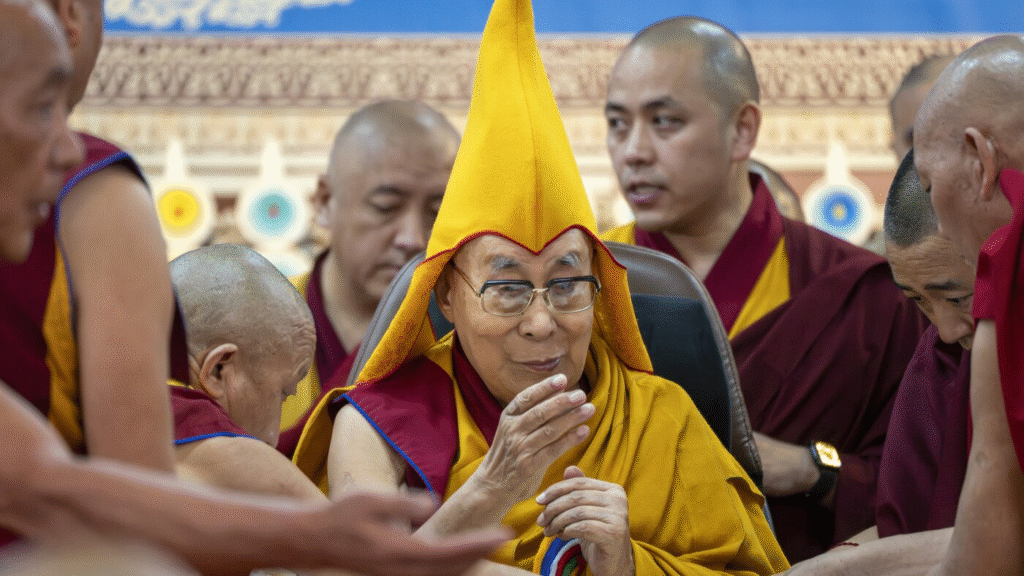
Cultural diplomacy initiatives—exhibitions, publications, university exchanges, interfaith dialogues—can project India as a natural home of Buddhism and a respectful custodian of Tibetan identity.
Recommendations for a Coherent Long-Term Tibet Policy
- Recognize the 15th Dalai Lama: India should provide political and spiritual sanctuary to the future Dalai Lama, if identified on Indian soil, and facilitate his recognition by Tibetan institutions.
- Institutionalize CTA Support: Formalize India’s support to the CTA through legislative protections, diplomatic channels, and development assistance.
- Public Diplomacy: Elevate Tibet’s profile through government outreach, parliamentary debates, think tank forums, and media engagement.
- Multilateral Engagement: Reintroduce Tibet into conversations at the UN, SAARC, and other regional platforms, especially around cultural heritage, religious rights, and ecological security.
- Border Community Investment: Strengthen development in border areas like Ladakh, Arunachal Pradesh, and Sikkim—both for national security and as a message of resilience against Chinese encroachment.
The Road Ahead for India, Tibet, and Asia
The question of the Dalai Lama’s succession is more than a spiritual issue—it is a test of Asia’s future. It will determine the trajectory of India-China relations, the integrity of religious freedom in the region, and the survival of one of the world’s most distinct spiritual civilizations.
India stands at a strategic crossroads. By reaffirming its support for Tibetan identity—not as an adversarial act, but as a democratic responsibility—it can reclaim its role as a moral force in global politics. In doing so, India can ensure that Dharamshala, not Beijing, remains the true spiritual capital of Tibetan Buddhism.
Also Read : Modi’s Political Evolution Traced Over 20 Years in New Book on Power Consolidation in India


